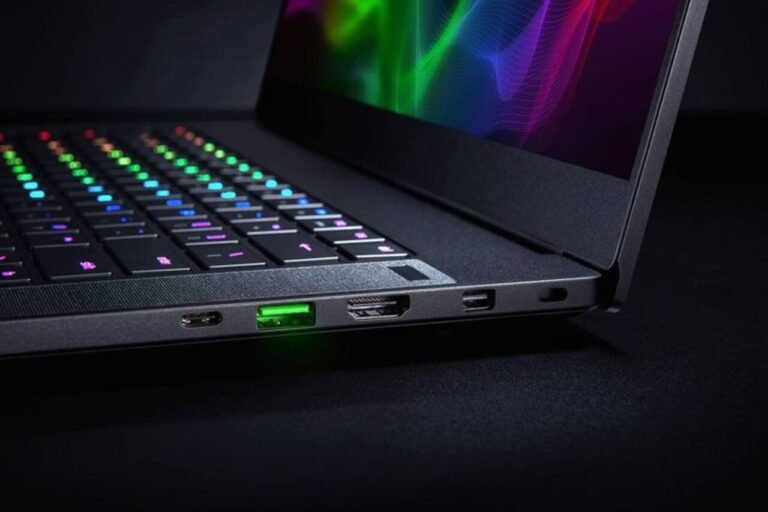How to Replace a Broken Screen on a Phone or Tablet
Although replacing cracked or damaged mobile device screens can be expensive, there are a few simple DIY solutions that can save your tablet or phone and prevent you from having to take it to a repair shop.
Depending on the model, third-party repair services normally charge between US$100 and US$200 to replace a tablet’s glass. The cost of replacing a tablet’s touchscreen might increase by $50 to $75.
It is far less expensive to replace the damaged glass with a touchscreen that works. Online vendors typically offer phones for $6 to $20. If you do the labour, a replacement tablet digitizer may cost $50 or more.
Once you get the hang of it, replacing the glass on a phone is both rather simple and inexpensive. Due to their greater size and additional components, tablets require a little bit more work.
If you don’t have a workstation that works well, purchasing more tools may be necessary. You may require a phone opening pry tool, tiny tweezers to handle internal wires, a Torx screwdriver, a flat-head screwdriver, and a precision screwdriver kit, depending on the device.
To soften glued phone parts, add a heat gun or a hair dryer with adjustable heat to the list. Include scissors, two-sided tape, canned air, and work gloves as well.
Analyze the repairs you need
When it comes to repairing fractures in a smartphone’s screen, priority one. The screen itself is frequently just slightly broken. A glass screen protector could have been put when you bought the phone.
Remove the device’s front plastic bezel by carefully prying it off. Most likely, the screen underneath is undamaged.
Public Service Announcement
With tablets, that is typically not the case. On those gadgets, the so-called screen protectors are thick sheets of translucent, clear film.
The film coverings may scuff or becoming hazy. They often assist in absorbing shock when objects are dropped on the tablet, reducing the chance that the touchscreen glass would fracture.
Peeling off the old film cover and putting on a new one is not too difficult. Dispute settled!
Replace vs. fix
Choosing one of the following three strategies might assist you in resolving the issue when a broken screen is the underlying cause. If possible, try to fix the damage rather than replacing it.
Is the screen, for instance, obscured or otherwise harmed as a result of your careless use of abrasive cleaning agents or coarse paper towels to clean the screen? If so, a remedy is available.
Is the screen completely shattered, as in having large spider cracks from being crushed, or is it only slightly cracked? With Sugru, a commercial product, you may repair a broken screen on a phone or tablet more conveniently. On any kind of gadget, a totally cracked screen is a good candidate for a screen replacement.
Getting Rid of the Smudges
Use an oleophobic coating kit to restore your phone or tablet’s screen to practically new condition if it has suffered from cleaning abrasion or hard handling. The screen is protected by this oil-repellent coating, which also makes the screen smoother and leaves fewer fingerprints.
The coating, which is a thin layer of fluoropolymer-based particles adhered to the glass, is comparable to Teflon. The coating kit is available from several internet retailers and electrical supply shops.
Tools required to apply the oleophobic coating include microfiber cleaning cloths, zipper plastic storage bags, and isopropyl alcohol at a 70 percent concentration.
Take these actions:
Use isopropyl alcohol to scrub the surface thoroughly. After that, use a fresh microfiber towel to dry the screen.
Get your wiping finger ready. Once you begin, move swiftly since the liquid solvent used to apply the oleophobic coating evaporates extremely rapidly. Wrap one finger with plastic wrap or a sandwich bag. Rub the coating liquid onto the screen with this finger.
15 to 20 droplets of the coating should be applied to the screen’s surface. Apply 10 drops to a section of the phone or tablet screen if it has a big surface area, working on one section at a time.
Distribute the coating quickly and evenly by rubbing your finger coated in plastic over the surface until the liquid evaporates.
With a fresh microfiber towel, dry the screen. Allow the coating to cure after that. For 8 to 12 hours, refrain from touching the screen to give the coating time to adhere to the surface.
Use a fresh microfiber cloth to remove any residual residue from the touch screen when the bonding period is over.
To completely enhance the oleophobic coating performance and film longevity, repeat this procedure two to three times.
Additional Options
There are solutions that work with varied degrees of dependability if your sole issue is with little scuffs and cracks on a tablet’s glass or a smartphone’s screen. Either a regular eraser pad or a real pencil eraser can be used.
Products with magic erasers Scratches on screens may be quickly repaired. Apply mild pressure while rubbing a dampened corner of the cleaning pad.
Scratches may be somewhat removed with pencil erasers as well. Simply use the eraser to massage the scrape in both directions for roughly 60 seconds. After that, massage it vigorously for 60 seconds.
Dentistry as an Alternative
Does toothpaste actually work to fill up cracks? I classify that solution as more “mythical” thinking, but I have acquaintances who fervently believe that this is a practical, affordable solution.
I view toothpaste as a stopgap measure for scratch removal. It functions on minor blemishes and fissures.
It is not a long-term fix for a touchscreen that is used frequently. The paste-over procedure will, at most, hide the fissures.
Sugru Saves the Day
Sugru is a moldable glue kit that may be used to fix damaged screens as opposed to replacing them. Actually, it wasn’t designed with phone and tablet repairs in mind when it was made. Its primary use is primarily in the realm of general repairs, where surfaces need to be filled and bonded together.
An example of adversity
your contact centre should be updated. Win a new digital look!
Though I’m sure there are other flexible glues like it, Sugru caught my attention and I think it’s a nice place to start.
It could work well for cracks that start at the corners of a phone or tablet screen, depending on how badly the screen is cracked. However, it will only be a temporary solution for large fractures that cover the entire screen, as spider cracks often do over time.
Take these actions:
Use a gentle cleaning towel to wipe and clean your screen. Avoid picking up any stray glass while performing this task.
Around the area that has to be fixed, use transparent adhesive tape. The phone should be on for this to perform at its optimum.
To make the border around the patch area visible, mark over the tape. This prevents the Sugru patch from going in the wrong places.
Apply a little amount of the patch to the screen’s cracked region. Make careful you use a tiny amount of patch. As required, gradually add more.
Replace and rip
The only other alternative, outside purchasing a new gadget, is full-scale surgery if your phone or tablet screen has more severe damage. Due to the device’s internal compactness, repairing the LCD screen is a challenging process.
The phone or tablet’s exterior shell must be taken apart entirely for repair. If the new screen has a top frame, it is very simple.
If not, you might need to seal the layers to maintain structural strength and dust and moisture protection. Depending on the size of the gadget at hand, sealing pads or double-sided adhesive tape can be used. Using B-7000/T-7000 adhesive makes replacing a phone screen easier.
Take a significant safety measure before you roll up your sleeves and begin. Purchase and put to use a static guard mat and wristband. This will prevent any electrical parts from unintentionally frying while the gadgets are being disassembled and reassembled. Static discharge cannot always be prevented by disconnecting the battery.
Public Service Announcement
To establish the amount of the damage and which screen components to buy, you must first disassemble the device. Find the LCD screen’s model number. Search for a replacement screen online using this number.
Typically, a label affixed to the sensor wire that is connected to the screen bears the component or model number. After separating the screen from the remainder of the device, you may reach this cable. Disconnect the cable connector from the edge of the screen’s backside with caution.
First, take off the device’s back cover and pull out the main battery to begin the teardown.
Step 2: Loosen any wiring that was firmly fastened and is now exposed, such as the camera cable. If the clasps are visible, then take the cables out. When clasps are unfastened, these wires just glide out of any exposed sockets. To free the tape-style cables, carefully tug on them as they are frequently adhered to the frame and other components.
Step 3: Remove the Phillips or Torx screws holding the LCD-containing chassis to the motherboard-containing rear frame and put them in a dish for storage. After that, slowly and gently remove the back frame away from the chassis.
Step 4: Disassemble any further cable assemblies that have become exposed as a result of the component separation. Keep visual hints on where to place which cable when reattaching it. For instance, arrange them face-up on the work area in the sequence of removal. or use a smartphone or digital camera to capture pictures.
Step 5: Unscrew a second set of screws to separate the LCD-containing chassis from the front frame, bezel, and glass assembly. The second bowl should be used to keep the screws. Remove the camera and any other components.
Step 6: Avoid touching the LCD display. By heating the adhesive join and tugging away, you may separate the broken glass from the bezel or front frame. Wear gloves since more glass shattering will occur during this phase.
Final Reflections
Several times of assembling and disassembling can be necessary. Similar holes are used by both sets of screws. The initial set of screws might easily be put in the wrong holes. Only when the second pair does not fit because you have previously utilised the hole will you discover this.
When connecting wires, be sure the connections are secure. First, make sure the clasps are open. The up position is typically vacant.
An example of adversity
BigCommerce can help you get to the e-commerce future, which is now | Sign up now
Firm snaps often indicate a quality assembly. Always place new metallic tape over old. The number of screws. Retrace your steps if you have any leftover.
Although replacing broken touchscreens and digitizer panels is not difficult, it does take close attention to detail. Following images and visual instructions might be the difference between an initial success and needing to try again after a failure.
For visual assistance, visit iFixit. It provides information on how to open various phone and tablet models using the appropriate tools along with a variety of model choices.







